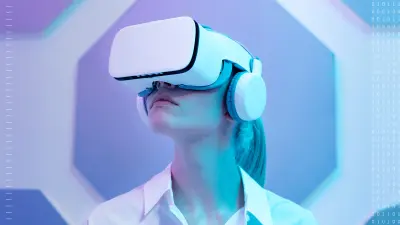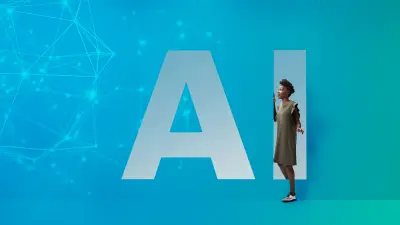AI that gets things moving
Bosch makes everyday life easier with algorithms
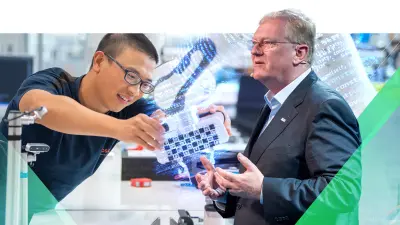
2025-06-24
Dramatic turns of phrase should be used sparingly. Not every advance marks a turning point, not every invention is epochal. However, what we’re currently seeing in artificial intelligence is big enough to justify almost any linguistic exaggeration. Cars, aircraft, computers, and the internet have perceptibly changed the world — but they haven’t had much effect on how people see themselves. AI will have a much more far-reaching impact here; the closest comparison in human history is probably the invention of the printing press. AI is much more than just a new technology. In the coming decades, it is set to transform our everyday lives – and also the way we as humans think about ourselves.
by Stefan Hartung
chairman of the board of management of Robert Bosch GmbH
We all know that, just as with any other technology, the use of AI is not without risks. However, I’m convinced that the opportunities clearly outweigh the risks — at least provided we don’t abandon our own intellect and powers of reasoning when dealing with AI in the future. At Bosch, we’re determined to continue making systematic use of both artificial and human intelligence as we pursue our ultimate aim of creating technology “Invented for life.”
Artificial intelligence has long since left the test labs at Bosch. It’s a part of everyday life: in our strategy, in our development work, in our processes. And, of course, in our products and solutions, too. For two years now, our entire portfolio has either been equipped with AI or developed or manufactured with its help.
To date, most people’s dealings with artificial intelligence haven’t gone much beyond using it for welcome and fascinating assistance in creating texts or images. Yet AI’s true potential doesn’t lie so much on screens and in the purely virtual world, but rather where it meets the physical world — which is to say, wherever things move, wherever technology makes people’s lives easier. Or, to put it another way, wherever we are to be found. Because Bosch is at the forefront of this development. After all, our strength lies precisely in how we can bring AI and in-depth industrial knowledge together.
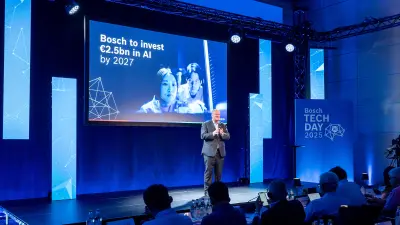
That’s why we’re planning to invest more than 2.5 billion euros in artificial intelligence by the end of 2027. We aim to use AI to make our processes even faster and our products even more innovative. And Bosch AI is already making everyday life safer, more secure, and more convenient. Let me name just a few examples: for riders of e-bikes, range anxiety is a thing of the past thanks to the AI-based “Range Control”; on construction sites, our wall scanner detects metal or electrical cables in the masonry simply by holding it against the wall — also thanks to AI; and in the kitchen, our Series 8 oven sets the correct cooking method and temperature for more than 80 dishes it recognizes automatically.
AI-based solutions are increasingly becoming the standard in the automotive industry
However, artificial intelligence won’t just give innovation across all our businesses a powerful boost. It will also noticeably boost our growth. Let’s consider mobility. With our ADAS product family, Bosch has developed automated driving systems for a range of vehicle classes. These employ adaptive algorithms to analyze and evaluate the data recorded by our AI-optimized sensors. This means the vehicle can distinguish between pedestrians, cars, and obstacles, and it can also assess the likely behavior of dynamic objects — almost like a human can. The difference is that the technology never gets tired.
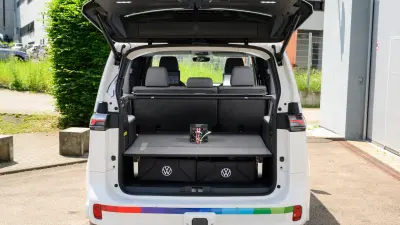
These kinds of AI-based solutions are increasingly becoming the standard in the automotive industry — and they will make assisted and automated driving safe and reliable in the future. While these developments have yet to reach their peak momentum both in the market and at Bosch, there’s no question in our minds that automated driving will become commonplace. We offer the right solutions for this, and that’s why we remain confident: we expect our sales of software, sensor technology, high-performance computers, and network components to double by the mid-2030s to well over 10 billion euros.
Our particular strength in this area is how we can combine the data we’ve collected and stored worldwide with what are known as collaborative AI training techniques. Over the past few years, our sensors have recorded a huge number of traffic situations all over the world, and we can now use these to train our AI models. In total, the data adds up to significantly more than 200 petabytes, or 200 million gigabytes. We use federated learning for the training. This is a machine learning process in which a shared AI application is trained across multiple servers distributed around the world. While these servers exchange various parameters with each other, the data itself isn’t shared. Given that some countries make exporting data more difficult or prohibit it altogether, this process is a decisive advantage that considerably shortens our development time.
AI has long been part of Bosch’s core business. Some 5,000 experts are working on the development and use of AI in a wide variety of areas. Since 2013, no other company has registered more AI patents with the European Patent Office than Bosch. This is also due to the fact that few other technology companies entered the market as early as we did. Back in 2017, we established the Bosch Center for Artificial Intelligence. It is now spread across four locations: Renningen, Pittsburgh, Bengaluru, and Haifa. This means we’re always up to date with everything that is being discussed, planned, and realized in the world of AI.
Of course, that includes not only technological trends but also AI’s social and political dimensions. After all, the competition between the world’s major regions won’t be decided in development centers alone. And at the moment, compared to the rest of the world, it unfortunately looks as if Europe is unnecessarily delaying its AI future with excessive regulation. As is well known, the EU wants to introduce uniform rules for trustworthy AI throughout Europe. This approach is fundamentally correct for two reasons: first, AI is not an end in itself, but should serve people; and second, AI solutions will become commercially viable only if customers really trust them.
But to implement the EU regulation, developers and companies need clear guidelines and defined standards. However, these are now set to be introduced much later, and this is causing confusion — especially for high-risk systems, which include automated driving. In addition, the regulation stipulates that AI systems must be continuously tested, monitored, and documented. This mixture of bureaucracy and strict but unclear requirements makes Europe a much less attractive location for AI companies than other parts of the world.
Europe must leverage industrial experience as a competitive advantage
We have to counter this. After all, dealing with AI is more than a question of economic competitiveness. It’s also about political freedom: in the future, a society that has no outstanding AI capabilities of its own will become increasingly dependent on others. What we lack in courage today, we will lack in security and sovereignty tomorrow. One thing is clear: the way for us to overcome these challenges is not by slowing down technological progress, but by directing it. Otherwise we will lose touch: Stanford University publishes its AI Index on the current state of the technology once a year. According to the latest report, 40 significant AI models were developed in the U.S. last year, 15 in China, and three in Europe.
Yet Europe in particular has an enormous competitive advantage — namely a unique wealth of industrial experience plus the corresponding data. If we succeed in combining this knowledge with pioneering AI applications, then Europe will be able to remain an industrial world leader in the 21st century.
To achieve this, however, we need more than just a policy of cautious regulation. We also need society to be as well informed and educated as possible when it comes to AI. Unfortunately, the results of the latest Bosch Tech Compass are rather sobering in this respect. We conduct this survey once a year to find out what people in leading industrialized countries think of modern technologies. This year, around three-quarters of respondents in India and China feel well prepared for the coming age of AI. In Germany, the figure is just 35 percent. At the same time, however, 72 percent of Germans consider AI to be the most influential technology of the next ten years. This is an imbalance that we need to rectify.
65,000 associates
have already completed the various courses at our Bosch “AI Academy”.
One way to do that might be by introducing AI as a school subject. But by the time this had any noticeable effect, the global AI race would have long since run its course. That’s why I think it’s now up to industry to rise to this challenge. Bosch has been running corresponding training programs since 2019, and more than 65,000 associates have already completed the various courses at our “AI Academy.” And our “Ask Bosch” AI platform provides all associates with a wide range of applications: language models, chatbots, translation agents, and, of course, agents for the creation of images and texts.
This is another reason why we at Bosch have the necessary expertise to use AI consistently and precisely in the area in which we see the greatest potential: where intelligent and self-learning algorithms meet sensors, actuators, and powertrains. However, rather than developing our own large language models for this, we prefer to use our partners’ existing models as a basis. Depending on the application, we also work with our own smaller, special models.
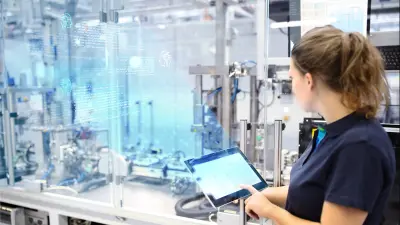
In addition to generative AI, we’re also increasingly working with what is known as agentic AI. As I mentioned earlier, both forms of AI together will create completely new worlds. And that includes the way we communicate with the technology around us. Our voice will soon increasingly replace all the levers and switches. Whether for vehicles, home appliances, or heating systems: the era of weighty instruction manuals is coming to an end. And I’m looking forward to intelligent technology that makes our everyday lives easier, safer, and more convenient, that relieves us of more and more tedious routine tasks — and that we will control rather than operate. That in itself marks an epochal shift.
